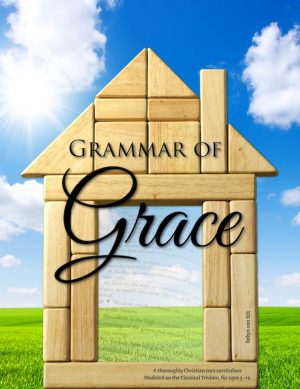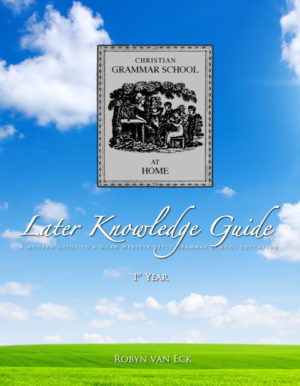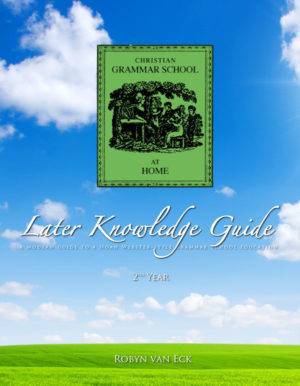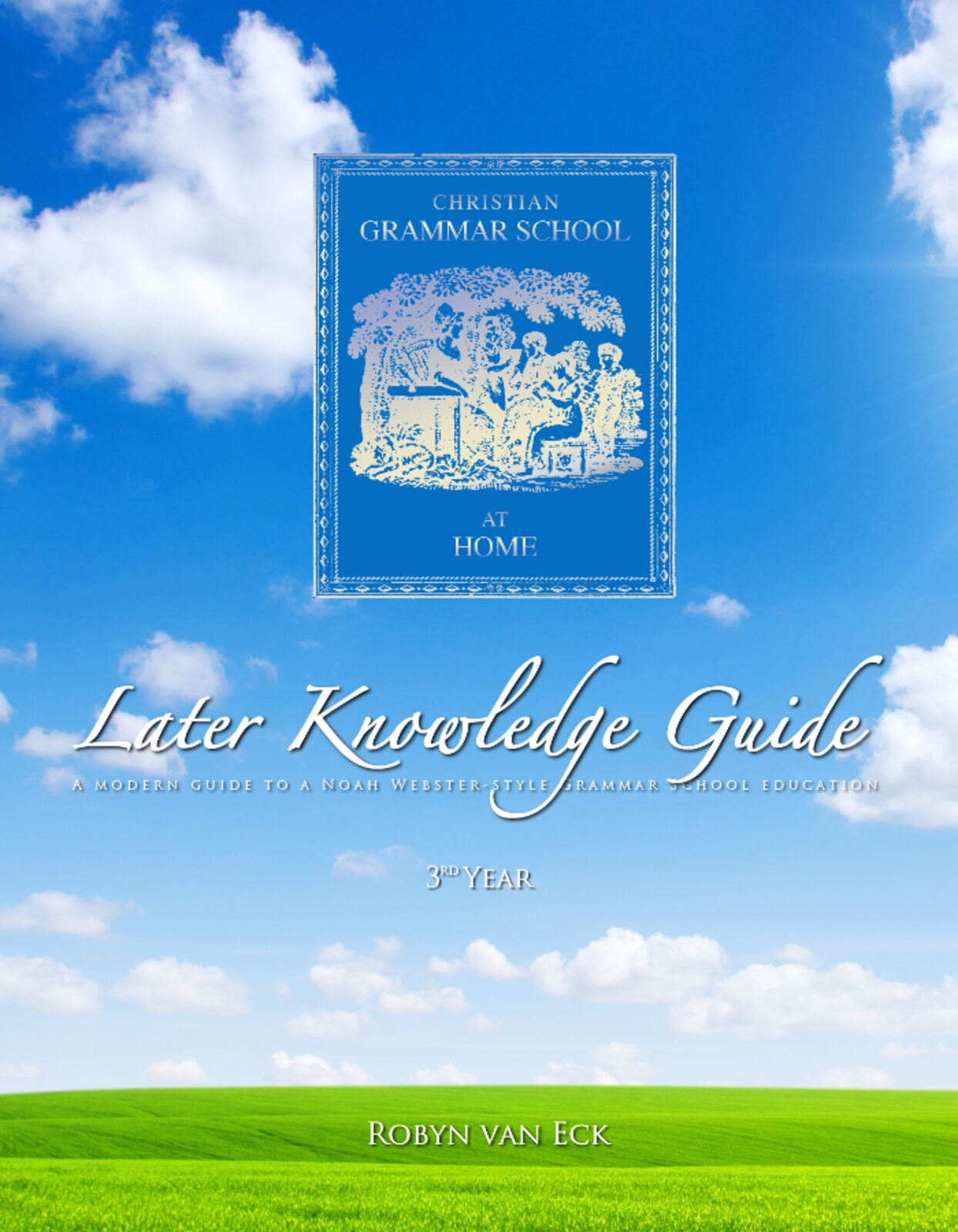Photo by Nikhita S on Unsplash
This is our single most frequently-asked question:
I wish I had seen Grammar of Grace sooner! It looks wonderful; how can I modify it to use it with my older kids??
Easy Add-On
If you do nothing else, just add the Grammar of Grace core curriculum with what you’re already using—that will be the memory work, Bible reading, and copywork. God exhorts us in the Bible, again and again, to memorize his Word, to read it, and to study it; and we Christian parents must teach our children those excellent disciplines. Those are all-ages subjects, at any rate. The memory work takes about 30 minutes a day, and the Bible reading and copywork each take about 15 minutes a day.
Later Knowledge Guides
As for the Later Knowledge curriculum, we’ve had several families start using the Later Knowledge Guides later—when the students were 12, 13, or 14, etc., because they hadn’t heard about it when the kiddos were younger.
It’s just like piano lessons. When a student goes to his first piano lesson—whether he is 5 or 16—the piano teacher pulls out the beginner book. And the student progresses at the pace that is just right for him, so he doesn’t miss anything. The 16YO will probably be able to move through half of the beginner book in the first lesson, and keep moving along at a quick clip, though!! When the teacher comes to things that student already knows, she can turn the page and move to the next thing. But she doesn’t just skip the first 5 books, and put the 16YO in the same book another 16YO student is in. (For that matter, most of her 16YO students are all in different books anyway, because no two are alike—the classical method is completely different from typical modern schooling where everyone is classed by age; instead, the focus is on children truly learning and understanding, and age has nothing to do with it!)
Two Questions
Here’s what you’ll want to consider: Has my older child learned this material yet? And, Do I want my older child to learn this material? If the answer to the former question is, No, and the answer to the latter is, Yes, then I wouldn’t let arbitrary age numbers hold you back. I always think of this Chinese proverb I heard a long time ago: The best time to plant a tree is 10 years ago; the second best time to plant a tree is today.
How to Plan?
As for specifics, my first and best piece of advice is to pray for wisdom. You know your children the best, and the Lord will give you wisdom for how best to raise them. For me, every summer, my wonderful husband lets me have at least a day or two—either a Saturday or two, or we’ll use up a vacation day or two—and he will take the children out of my hair, and I will pray and pour over the homeschool curricula, and take pencil to paper and plan out how I think our homeschool should go for the coming year. And I usually start by praying and thinking about where I want each child to be in a few years, and then sketch out this year to make sure we’re on that path. That is my best advice for you!
After praying, here’s the second thing I’d say: Don’t worry about it too much. If you pick a pace that’s too slow, after awhile, you will figure that out, and then you can pray about it again, and spend a little time one evening considering how it’s going, and you can adjust the pace to be faster, or to skip ahead. Same for if you pick a pace that’s too fast, and you need to adjust to slow down.
The most important thing is that your student understands the material. If that’s easy for him, speed up until it gets challenging! But if he doesn’t understand it, then going at a fast pace will only make him fall further behind.
The biggest danger you will probably have with an older student, especially if he loves reading, is that he may quickly skim over sentences without slowing down long enough to understand them. The Later Knowledge Guide gives instructions about that, but be especially alert about that with your older Later Knowledge student.
Two Thoughts
Two specific thoughts about using the Later Knowledge Guides with older kiddos:
First, much of the Later Knowledge Guide material is considered high school level, these days, anyway. The Latin we study in the LKG’s is two years of high school Latin. The English grammar is a high school grammar course. The literature starts out pretty easy, but even in the 1st Year LKG, you will find that, as an adult, you have to focus very hard to understand some of the sentences, because of the rich vocabulary and artful writing. I have to read some of them out loud and put on my thinking cap for some of them. By the 3rd Year LKG, the children are reading unabridged Pilgrim’s Progress and Robinson Crusoe, two of the most monumental works in all of English literature; both of which are as challenging as anything I read in AP English.
Second, as I said above, you will want to modify to suit each child.
For Later Knowledge students who start at age 13 or 14, or whenever, the older kiddos start with the 1st Year LKG, but they can often progress through it faster than the younger ones. Especially on subjects they’re already familiar with!
The Later Knowledge Guides are all planned out into days & weeks, so that is where you would use your judgment on changing that up.
A Possibility
Perhaps, plan to have a high school-aged student go through both the 1st & 2nd Year Later Knowledge Guides in one year. At the start, you will find this really easy. Don’t be deceived, though; those easy assignments are doing a lot of good!!!
You might even start over the summer, because the first half of the 1st Year LKG is going to be ridiculously easy and fun. As the year progresses, watch your student carefully. At some point, it might turn out that the book’s pacing stops being too easy and starts being just right. I would be watching carefully (and prayerfully) for that, and then allow the student to settle into the more normal pace when he gets there. (Again, imagine the 16YO in piano lessons; he flies through the first few books, and after awhile the pace of the book starts to be just right and normal, and the 16YO progresses at a more normal pace through the rest of the books.)
There is a daily assignment in the LKG for Science. For an older student of 12 or 13, I would suggest reading a nice science textbook each year, such as Kevin Swanson’s God Made Animals, for that assignment, but not doing any tests, exercises, or other homework. Just read a nice science textbook and enjoy it. Divide the sucker up into 120 parts (1 page a day, 2 pages a day, whatever fits), and let that simple reading be the assignment. This is the classical method for science at this age. They enjoy it, and they learn a lot! For a student aged 14 or up, same thing, except I would be looking at a high school-level science text, such as Kurt Wise’s Devotional Biology. If your high schooler is thriving in everything else, go ahead and try the whole course, with exercises and everything. But if his schedule’s pretty full, then do it just like the Later Knowledge Guide says: no tests, no exercises, just read and enjoy.
A 9th grader following this plan would complete the 1st & 2nd Year LKG’s in “9th Grade”, and learn far more English grammar, writing, and literature than a standard high school 9th grade curriculum, take more than a full year of high school Latin, do high school math (you follow the course you’re on with math), learn lots of ancient history absolutely appropriate for high school level, and learn high school biology. The Later Knowledge Guide might not say “9th Grade Curriculum” on the front, but it’ll stand up against any one you’d find elsewhere.
Above All
Again, the old methods taught children to understand the things that they were learning. Watch your student to ensure that the pace moves enough to challenge him, but not so quickly that he is not learning to think and to understand the material that he is learning.
If he doesn’t move super fast through it all, doesn’t that mean that he needed to learn these things? These methods worked for students of all ages, in the days of the Reformation, Great Awakening, and all the rest. These methods work. Just don’t rush your student through because of imaginary fears about being “behind” arbitrary age benchmarks. Remember that the majority of students graduating from high school cannot read or write well (despite what the system’s test scores might say). Take as much time as your student needs to learn these methods well, and then he will be able to learn whatever else he desires to study. Most of all, he will be able to study the Bible!
Thanks for dropping by; please keep us in prayer!
Recommended Resources
-

Grammar of Grace
$89.00 – $148.00 Select options This product has multiple variants. The options may be chosen on the product page





Shanna Everett
I’m working with my 5 yr old in Grammar of Grace and looking ahead to week 8 in the 1st cycle Timeline you use a notation – r. I can’t find any notes or comments from you telling what "r." means or represents. It is first used when Eli is introduced. Please inform me what "r." stands for. Thanks – Shanna
Robyn Van Eck
Hi Shanna,
That is such a good question; everyone getting started digging into history has this question, sooner or later!
So, you when you’re looking at timelines and history dates and stuff, there are a few abbreviations that are standard practice, because it gets a little bothersome to write out a few of the same things over and over again, and it takes up space and ink (which used to be crazy expensive), so we have these few abbreviations that came to be used. The "r." next to a date means that those are the dates of that particular ruler’s reign, not his lifetime. So, for President Washington, you would write (r. 1789-1797), and you know that wasn’t how long he lived, but just how long he was president of the United States.
I’ll add a few others I can think of, in case they end up being confusing, too. When the date has a "b.", that means that was when a person was born; and "d." means that was when the person died. If there’s no notation, and it’s talking about a person, then the dates show his lifespan; but if it has the "r.", then (again) the dates only show when he reigned. Sometimes, both will be listed. "Ca." means "circa", which means we’re not sure of the exact date, but it was "around" (or circa) the date given. Now that you’ve seen this, you’ll totally start seeing it in other places, and now you’ll know! 🙂